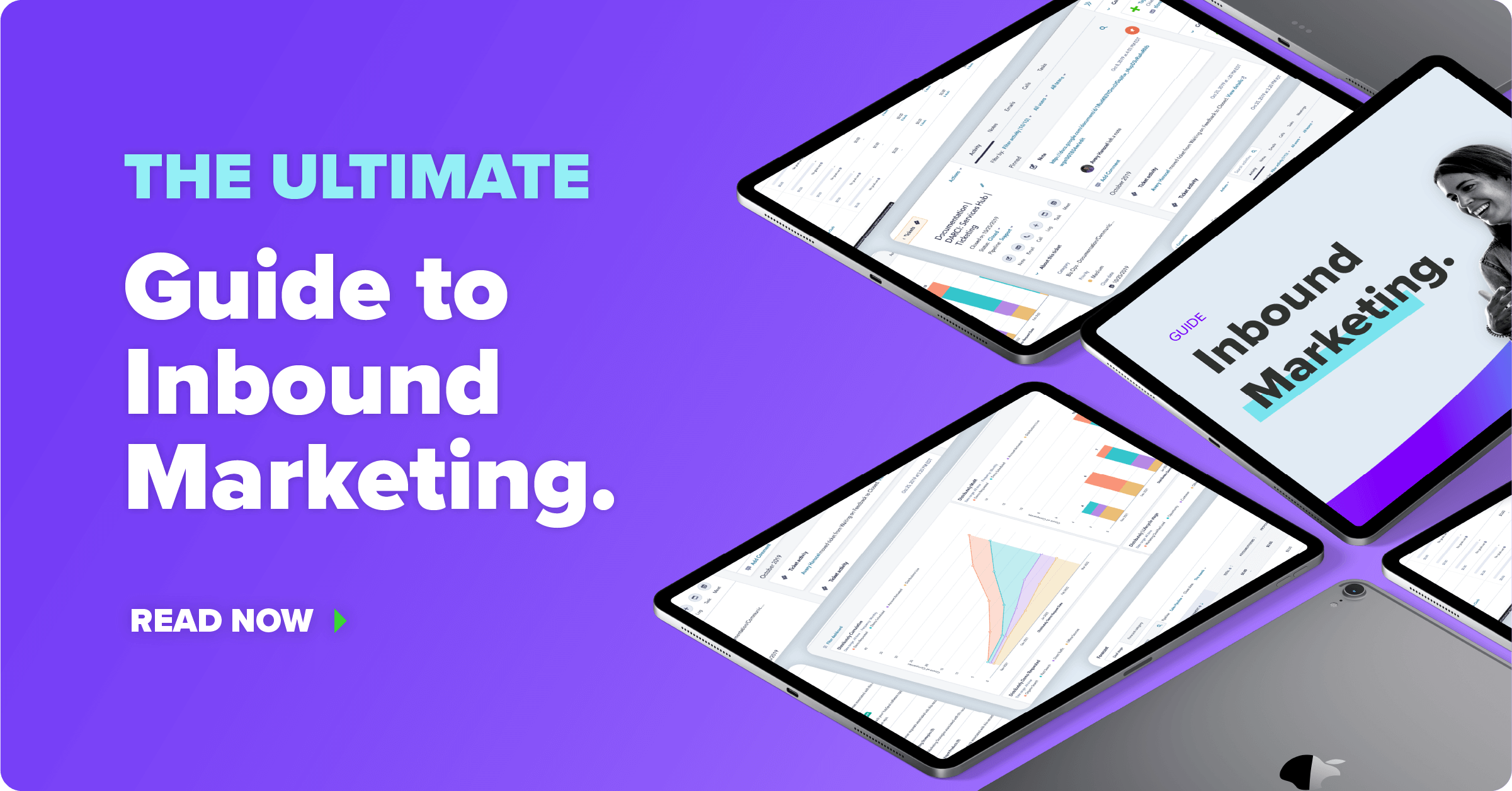Inbound vs. Outbound Marketing

There was a massive shift in the marketing world within the last decade that put pressure on marketers everywhere to use the inbound methodology.
This shift occurred because prospects and buyers got smarter, their habits changed and, in turn, the way we sell and market to them also had to change. However, while at New Breed we love and swear by the inbound methodology, it’s not as simple as “inbound is better” or “outbound is dead.”
There are a lot of differences between an inbound approach and an outbound one, but leveraging the strengths of both methods will lead to the most successful marketing strategy.
The Structure and Premise of Inbound and Outbound
Buyers' habits have changed as technology has changed. Buyers no longer need you to explain to them why they should want to buy your product. People don’t buy things because someone came knocking on their door to showcase it to them; they can google what they’re looking for and see every option available on their own.
This has empowered buyers to take more control over the products they purchase and the way in which they go about buying them, which is why the inbound methodology was born.
Inbound focuses on building trust and relationships with your prospects through content and education so that buyers reach out to you to express their interest when they are ready.
At its core, inbound marketing is all about letting prospects and leads find you, and outbound is about approaching and going after leads that you are identifying.
The more technical way to think about inbound versus outbound is that inbound focuses on interest over fit while outbound prioritizes fit over interest.
An outbound method is often associated with being outdated or thought of as the “old” way of marketing. That’s because things like cold calling, purchasing lists and sending email blasts to large and often unsegmented contact lists are most often associated with outbound marketing.
These types of tactics rely on convincing or selling someone on the value you bring to the table, which presents more difficult and oftentimes negative conversations for sales.
If a lead comes to you through their own search process and interest in your product or service, they typically already know a decent amount about your company from your website. This makes the selling process easier because your sales team can spend their time building a relationship with that prospect instead of trying to introduce themselves and your company in order to get them to agree to a meeting.
It’s All About Timing
So much of what we do as marketers and salespeople is about timing. The perfect sales email can be lost and left unopened if it hits someone's email when they’re too busy. The best paid ad can be wasted if it shows up to someone when they aren’t ready to click on it yet or have no idea who your company is.
Timing is what differentiates the way you approach bringing in inbound and outbound leads.
The inbound methodology prioritizes meeting your buyers where they are in the moment they are there. It’s about providing great content on your website so that when the leads that are a good fit for your company are searching for a product or solution like yours, your content shows up. This enables the individual to educate themselves about your brand, your product or solution and how you can help solve their challenges.
Outbound tactics, like cold calling or list buying, take a more “push” approach to marketing.
When a rep calls someone that they think is a good fit lead and they try to introduce them to your company and what you can do for them, there are many obstacles you could face. The person on the other end may be too busy to take the call or they may not recognize your brand and just decide they don’t care enough to listen or read the entire email. This happens because there was no warm-up for sales’ outreach, and if someone doesn't give you the chance to make your case, there’s no hope.
Inbound makes timing less about luck or guessing and more about being prepared for that right moment. It allows your sales team to take calls and meetings with prospects who have already expressed interest either by saying so or through their digital body language on your site.
Put in Effort Where It Counts
The amount of effort required for inbound is different from outbound, but I wouldn't necessarily say that one is greater than the other.
An inbound strategy takes a while to get off the ground. You will need a solid website and a content strategy that is consistent. Plus, it will take a while for your content to rank in Google Search to be found by leads and prospects.
But once you have leads coming into your system through an inbound strategy their sales processes should be more direct, honest and have a higher chance to close than those that come in through an outbound approach.
If marketing is bringing in the right leads, sales should have an easier time when using an inbound strategy.
If you’re taking an outbound approach, like buying a contact list and cold calling or sending batch emails, it may seem like less work upfront and less waiting, but your sales team will be putting in a lot more effort across the board.
The other downside to an outbound approach is that all of that effort your sales team is putting in may be misplaced if the lead turns out to not be interested or even a good fit after a few calls.
With inbound, that prospect has already expressed interest of some kind, so the odds that that time for the call is wasted are a bit lower, especially considering the reps should be able to skip introduction level information and start solving for prospects’ needs immediately
Inbound and Outbound Working Together
While there seems to be a huge shift out there to get away from using outbound methods, we like to use a combination of both inbound and outbound.
Outbound methods alone can be intense, disruptive or even aggressive in some cases. But, when done in a more inbound fashion, they can be very successful.
A great example of this is an account-based marketing strategy (ABM). ABM is an outbound approach done in an inbound way that is used to close big, complex deals.
An ABM strategy uses pre-selected target accounts or companies that you know would be an excellent fit for your product or service. Your marketing and sales team work together to send very targeted ads and emails to individuals at these companies in order to educate them about your brand and what you have to offer.
ABM uses a perfect blend of outbound and inbound tactics. While your reps are choosing the companies to go after, they aren’t just calling them up out of the blue without any real preparation or warmth. Your marketing and sales team work together to serve the individuals at those companies personalized emails and ads so that the second they see engagement from those individuals, they can reach out with a warm introduction.
That first interaction is smoother and more natural because your reps know that those prospects have been to your site or even read some of your content and that starts the conversation in a natural and authentic way, which is the inbound side of ABM.
Whether you use an ABM strategy or not, you don’t have to go all in one inbound or outbound at your business. Your product or service, your team size, your sales cycle and a ton of other factors will help you build the right process for your marketing and sales team.
There is no one-size-fits-all way to do inbound. Inbound is a methodology of adding value before extracting it and building trusted relationships with prospects. When done well, it’s a great way to build a long term business strategy that truly puts your customers first.
This post was originally published June 13, 2013.
Weslee Clyde
Weslee Clyde is an inbound marketing strategist at New Breed. She is focused on generating results using inbound methods and is driven by the customer experience. When not at the office, you can find her binging a docu-series on true crime or perfecting her gluten-free baking skills.





